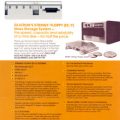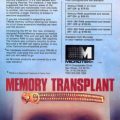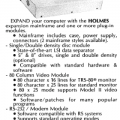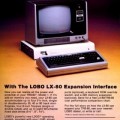The Microtronix Expandable Interface
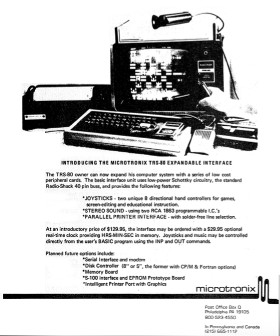
A 1978 Microtronix advertisement for the Expandable Interface from H&E Computronics
The Microtronix Expandable Interface was probably the first third-party alternative to the Radio Shack Expansion Interface for the TRS-80 Model I. It cost $129.95 when it was introduced in late 1978 by Microtronix of Philadelphia, Pennsylvania. According to the product announcement in H&E Computronics, the Expandable Interface was also available in kit form for around $100.00.
Microtronix sold software and hardware for the TRS-80 (as well as the Apple II and Commodore PET), including the Electric Pencil lowercase modification and a 16K RAM expansion. They demonstrated the Expandable Interface at the Personal Computing ‘78 show, which was held in 1978 in Philadelphia from August 25th to 27th. The Expandable Interface had an unusual set of features:
- a parallel printer port
- two joysticks for games (which Microtronix also sold separately).
- stereo sound using two RCA-CDP1863 frequency generators
- a “real-time-clock”1 for $29.95 extra
The product description in BYTE stated that “joysticks and music may be controlled directly from the user’s BASIC program using the INP and OUT commands.”
Unlike most Expansion Interface alternatives, such as the LNW System Expansion, the Expandable Interface didn’t provide sockets for extra memory. Memory could only be expanded using “low cost peripheral cards” that added features to the Expandable Interface. In fact, the name “Expandable Interface” referred to this expandable design. Microtronix advertisements mentioned a few of the peripheral cards, both available and planned:
- a floppy controller2
- an RS-232 interface
- 32K of memory
- a S-100 interface
- a color graphics interface to a television
The Expandable Interface disappeared from Microtronix advertisements in late 1979, although it was probably still sold until at least 1980.
-
“Real-time-clock” meant a heartbeat counter for measuring time, not the battery-backed clock that the term means today. ↩︎
-
Microtronix is sometimes incorrectly credited with creating the first double-density controller for the TRS-80 in 1979, predating the Percom Doubler by a year. Microtronix did sell a “Double Density Disk Storage” product for the TRS-80, but it used 77-track drives (instead of 35-track) to double the storage capacity. It had nothing to do with a double-density controller. ↩︎
